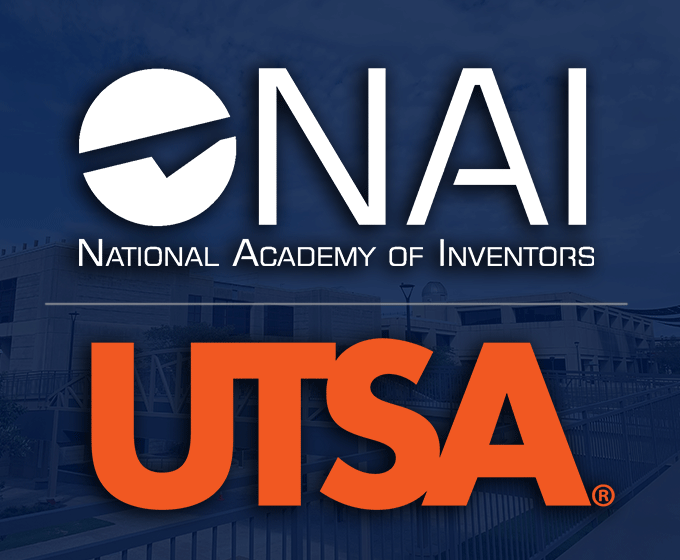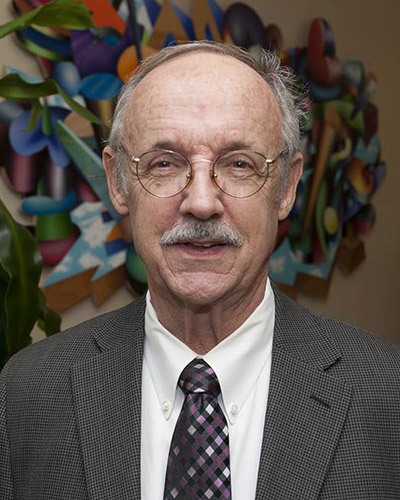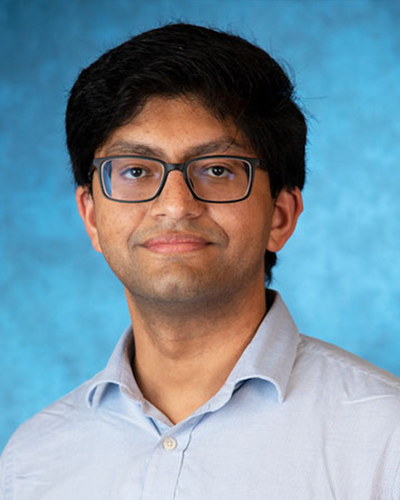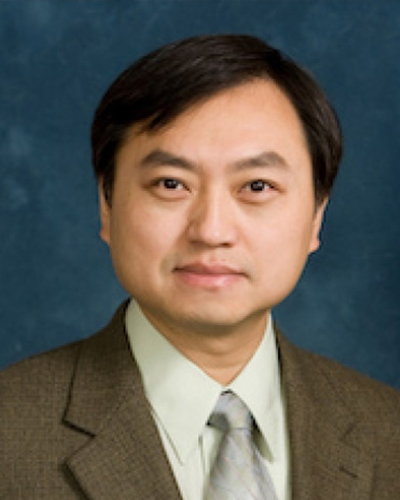
FEBRUARY 20, 2025 — Three researchers from UTSA will join the National Academy of Inventors (NAI) Class of 2025 as senior members. The NAI senior member program recognizes active faculty members, scientists and administrators with notable success in patents, licensing and commercialization who have produced technologies that can create “real impact on the welfare of society.”
This year, 162 inventors hailing from 64 NAI member institutions across the nation joined the 2025 class of NAI Senior Members, making it the largest cohort to date. Collectively, they are named inventors on over 1,200 U.S. patents.
UTSA’s senior members are James P. Chambers, professor of biochemistry in the Department of Molecular Microbiology and Immunology in the UTSA College of Sciences, Shrihari Sankarasubramanian, assistant professor of biomedical and chemical engineering in the Margie and Bill Klesse College of Engineering and Integrated Design and Jing Yong Ye, professor in the Department of Biomedical Engineering and Chemical Engineering in the Klesse College.
“NAI’s senior members program is among the highest honors that can be bestowed upon an inventor,” said JoAnn Browning, UTSA interim vice president for research. “Our newest members, Drs. Chambers, Sankarasubramanian and Ye, have earned this distinction through their sustained dedication to innovation and through the outstanding impact of their inventions. I’m thrilled to see their groundbreaking work in medicine and energy receive this recognition.”

Chambers is an internationally known biochemist whose work is published widely in peer-reviewed journals and has garnered over $10 million in research grants from federal, state and private sources. He was elected Fellow of the American Association for the Advancement of Science (AAAS) in 2022 and named UTSA Innovator of the Year in 2024.
Among Chambers’ inventions is the first-ever sensor (1988) capable of detecting chemical agents and toxins on the battlefield, an achievement recognized with the U.S. Army’s Distinguished Service Award. In 2011, he developed a patented test for identifying a Francisella bacteria mediated biomarker following infection and more recently contributed to the development of a viral transport medium used worldwide for rapid, high fidelity (nucleic acid based) COVID-19 testing during the pandemic.
He is a co-founder of the Phage Refinery, a company focused on screening therapeutically effective bacteriophages (viruses that can kill bacterial pathogens). The company is exploring electrical charge and other factors that contribute to the resilience of phages to make phage therapy, which has historically had mixed results, more consistent and effective.
“Because antibiotic resistance is an urgent and growing threat to public health, phage therapy is anticipated to play a pivotal role in treatment of these otherwise untreatable, life-threatening infections,” Chambers said.

Sankarasubramanian develops electrochemical energy conversion and storage devices, including large-scale batteries to stabilize the electric grid and electrolysis devices for astronaut mission support. This work combines physical chemistry, materials development and device engineering.
His research has been published in Nature Energy and Proceedings of the National Academy of Sciences and has resulted in six issued and seven pending U.S. patents. Since moving to UTSA in 2021, he has raised $1.8 million in direct ongoing research funding from supporters such as NASA, the Advanced Research Projects Agency—Energy (ARPA-E), the U.S. Department of Energy and the Defense Advanced Research Projects Agency.
From 2017 to 2023, Sankarasubramanian served as the tech-to-market lead on a project with $4 million in funding from ARPA-E, resulting in the invention of new polymeric ion exchange membranes and the titanium-cerium redox flow battery. This technology, which is in the process of becoming commercialized, has the potential to enable electric grids that are fully solar powered.
Sankarasubramanian has fostered several industrial collaborations through the NASA Small Business Technology Transfer program; he serves as the academic partner on two STTR phase two grants. The projects are based on his latest patent filing related to technology that can use electrolysis to produce oxygen, methane fuel and ethanol from the water and carbon dioxide available in the Martian atmosphere, a process required to support crewed missions to Mars.
“The overarching goal of my lab is to develop electrochemical technologies for the betterment of humanity as a whole,” Sankarasubramanian said. “The flow batteries we are developing will ensure that the electric grid will stay functioning even during large demand spikes like the Texas winter storm of 2021. The carbon dioxide electrolysis technology we are developing for NASA also has the potential to enable decarbonization and reduced pollution here on Earth.”

Ye has developed a diverse portfolio of cutting-edge innovative technologies for biomedical imaging and sensing applications, with 14 issued patents and two pending. His research spans a wide range of areas at the intersection of biomedical optics and nanobiotechnology, with particular emphasis on laser-based detection that can support biomedical research, including cancer research, drug delivery, drug toxicity testing and neuroscience.
Ye is a co-founder of SAFEbiosense, a company dedicated to developing, building and bringing to market innovative biosensing and imaging systems for biomedical applications. The company offers patented technology that detects molecules by shining light on a photonic crystal sensor and analyzing changes in the interaction between the light and the sensor.
“Because of how the light interacts with the crystal, even incredibly small changes in the environment around the sensor — like the presence of a few molecules — cause a noticeable shift in the probe light reflected from the sensor,” Ye said. “This enables the detection of much smaller quantities of a substance — quantities that were previously undetectable. This could be game-changing for areas such as drug toxicity screening and pharmaceutical quality control, where detecting even trace amounts of endotoxins is critical for ensuring patient health and safety.”
Chambers, Ye and Sankarasubramanian will be formally inducted at the 14th NAI Annual Conference on June 23-26 in Atlanta.
“To see this program grow year over year is a testament to the dedication our Member Institutions have to fostering innovation on their campuses and supporting their inventive staff and faculty,” said Paul R. Sanberg, president of NAI. “This year’s class comes from a multitude of impressive fields and research backgrounds from across the world. We applaud their pursuit of commercialization to ensure their groundbreaking technologies can make a difference by tackling the world’s most pressing issues, improving quality of life across society and advancing the economy.”
UTSA Today is produced by University Communications and Marketing, the official news source of The University of Texas at San Antonio. Send your feedback to news@utsa.edu. Keep up-to-date on UTSA news by visiting UTSA Today. Connect with UTSA online at Facebook, Twitter, Youtube and Instagram.
Move In To COLFA is strongly recommended for new students in COLFA. It gives you the chance to learn about the Student Success Center, campus resources and meet new friends!
Academic Classroom: Lecture Hall (MH 2.01.10,) McKinney Humanities BldgWe invite you to join us for Birds Up! Downtown, an exciting welcome back event designed to connect students with the different departments at the Downtown Campus. Students will have the opportunity to learn about some of the departments on campus, gain access to different resources, and collect some giveaways!
Bill Miller PlazaJoin us for an intimate evening of cocktails, conversation, and culinary inspiration with Pati Jinich, Emmy-nominated chef and James Beard Award-winning author. Enjoy light bites and signature drinks in the warm, modern setting of Mezquite as Pati connects with guests over her passion for Mexican cuisine and storytelling.
Mezquite Restaurant in Pullman Market, 221 Newell Ave., San Antonio 78215From inspired courses to thoughtful pairings and a rich sense of community, the Ven a Comer Signature Dinner is a night of shared meals, shared stories, and unforgettable flavor.
Stable Hall (Pear Brewery), 307 Pearl Pkwy, San Antonio 78215Come and celebrate this year's homecoming at the Downtown Campus with food, games, giveaways, music, and more. We look forward to seeing your Roadrunner Spirit!
Bill Miller PlazaThe University of Texas at San Antonio is dedicated to the advancement of knowledge through research and discovery, teaching and learning, community engagement and public service. As an institution of access and excellence, UTSA embraces multicultural traditions and serves as a center for intellectual and creative resources as well as a catalyst for socioeconomic development and the commercialization of intellectual property - for Texas, the nation and the world.
To be a premier public research university, providing access to educational excellence and preparing citizen leaders for the global environment.
We encourage an environment of dialogue and discovery, where integrity, excellence, respect, collaboration and innovation are fostered.